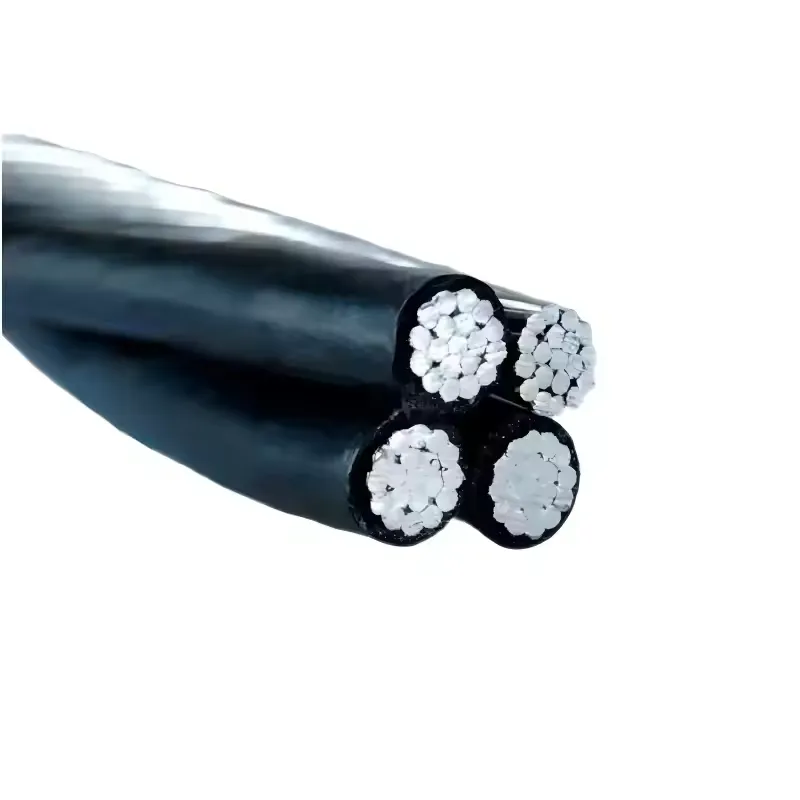Optimizing Cable Safety: Advances in Low-Smoke Halogen-Free Flame Retardant Thermoplastic Polyurethane (TPU) Sheath Materials
Time: 2025-03-09 10:24:51
Source: Henan Province Jianyun Cable Co., Ltd.
Introduction
With the growing demand for safer and more environmentally friendly cable materials, low-smoke halogen-free (LSHF) flame-retardant thermoplastic polyurethane (TPU) has emerged as an innovative solution. Traditional TPU materials exhibit excellent flexibility, durability, and mechanical strength, making them suitable for cable sheaths. However, conventional TPU has drawbacks: it generates excessive smoke and toxic gases when burned, limiting its applications in public and enclosed spaces.
Recent advancements in material science have led to modified TPU formulations that improve fire resistance while maintaining mechanical integrity. This article explores the latest developments in TPU sheath materials, focusing on flame retardancy, smoke suppression, and mechanical performance.

Why Low-Smoke Halogen-Free TPU Matters?
Traditional flame-retardant TPU materials often contain halogenated additives, which, while effective at suppressing flames, release toxic and corrosive gases during combustion. These emissions pose significant risks to human health and infrastructure, especially in subways, trains, ships, and public buildings.
Low-smoke halogen-free (LSHF) TPU materials address these concerns by:
-
Minimizing smoke and toxic gas emissions in case of fire.
-
Maintaining high mechanical strength and flexibility for use in demanding cable applications.
-
Reducing environmental impact by eliminating halogen-based additives.
Key Modifications to Improve TPU Performance
Researchers have explored various methods to enhance the flame retardancy and smoke suppression of TPU while maintaining its flexibility and strength. The main modifications include:
1. Incorporation of Flame Retardants
Two primary flame retardants used in TPU modifications are:
-
Aluminum Hydroxide (ATH): Functions by releasing water vapor upon heating, absorbing heat, and reducing combustible gases.
-
Diphenyl Phosphate (BDP): A phosphorus-based additive that improves flame resistance and enhances charring during combustion.
Studies show that surface-treated ATH offers better mechanical properties than untreated ATH, improving compatibility with the TPU matrix.
2. Synergistic Flame Retardant Additives
In addition to ATH and BDP, synergistic additives enhance flame retardancy and smoke suppression:
-
Zinc Borate (ZB): Enhances the flame resistance of TPU while reducing smoke density.
-
Organically Modified Montmorillonite (OMMT): More effective than ZB in improving both flame resistance and smoke suppression.
Comparative results indicate that OMMT outperforms ZB in reducing smoke density and improving char formation, making it a preferred additive for LSHF TPU.
3. Surface Modification of ATH
Surface-treated ATH using vinyl silane (ATH-104ZO) and amino silane (ATH-104IO) improves the TPU’s mechanical properties:
-
Vinyl Silane-treated ATH (ATH-104ZO): Increases TPU’s elongation at break, making it more flexible.
-
Amino Silane-treated ATH (ATH-104IO): Enhances tensile strength, improving durability.
Performance Testing and Results
Researchers conducted various tests to evaluate TPU’s performance, focusing on mechanical properties, flame retardancy, and smoke density. Key findings include:
1. Mechanical Strength
-
Increasing ATH content enhances flame retardancy but reduces flexibility.
-
Adding BDP improves tensile strength and elongation at break, making TPU sheaths more suitable for flexible cable applications.
-
Surface-treated ATH significantly improves TPU’s mechanical integrity.
2. Flame Resistance
-
The Limiting Oxygen Index (LOI), a measure of flame resistance, increases from 19.0% (pure TPU) to 40.2% (TPU with OMMT).
-
TPU with 50% ATH and 10% BDP achieves V-0 flame retardancy, meaning it self-extinguishes within 10 seconds during burn tests.
3. Smoke Density Reduction
-
Zinc Borate (ZB) reduces smoke density by 23%, while OMMT reduces smoke by 48%, making OMMT the superior choice.
-
TPU materials containing OMMT form a denser char layer, which helps to prevent the release of smoke and toxic gases.
Practical Applications
The advancements in low-smoke, halogen-free flame-retardant TPU materials make them ideal for a range of high-safety applications, including:
-
Power Cables: Used in high-rise buildings, subways, and tunnels to reduce fire hazards.
-
Automotive Wiring: Enhances fire safety in electric vehicles.
-
Industrial Data Cables: Ensures minimal smoke and toxic emissions in case of a fire.
Future Directions
With increasing regulatory emphasis on fire safety and environmental protection, the future of TPU materials will focus on:
-
Enhancing material recyclability to align with global sustainability goals.
-
Developing hybrid flame retardant systems that combine the benefits of ATH, BDP, and nanomaterials.
-
Exploring bio-based TPU alternatives for further environmental benefits.
Conclusion
The development of low-smoke halogen-free flame-retardant TPU materials represents a major breakthrough in cable safety and performance. By incorporating advanced flame retardants, synergistic additives, and surface-modified fillers, researchers have successfully enhanced TPU’s fire resistance while maintaining its flexibility and mechanical strength.
As industries continue to prioritize fire safety and environmental sustainability, these next-generation TPU materials will play a crucial role in shaping the future of safer, greener, and more efficient cable solutions.
References
-
Sun, G., & Yan, B. (2024). Modification of Low-Smoke Halogen-Free Flame Retardant Thermoplastic Polyurethane Elastomer Sheath Material. Wire & Cable, 2024(5), 58-65. DOI: 10.16105/j.dxdl.1672-6901.202405012
-
Zhou, Y., He, J. L. (2024). Development of Environmentally Friendly High-Capacity Power Cables. Nature Reviews Electrical Engineering, 1(9), 565-566.
-
Huang, X. Y., Zhang, J., Jiang, P. K., et al. (2020). Material Progress Toward Recyclable Insulation of Power Cables. IEEE Electrical Insulation Magazine, 36(1), 8-18.
